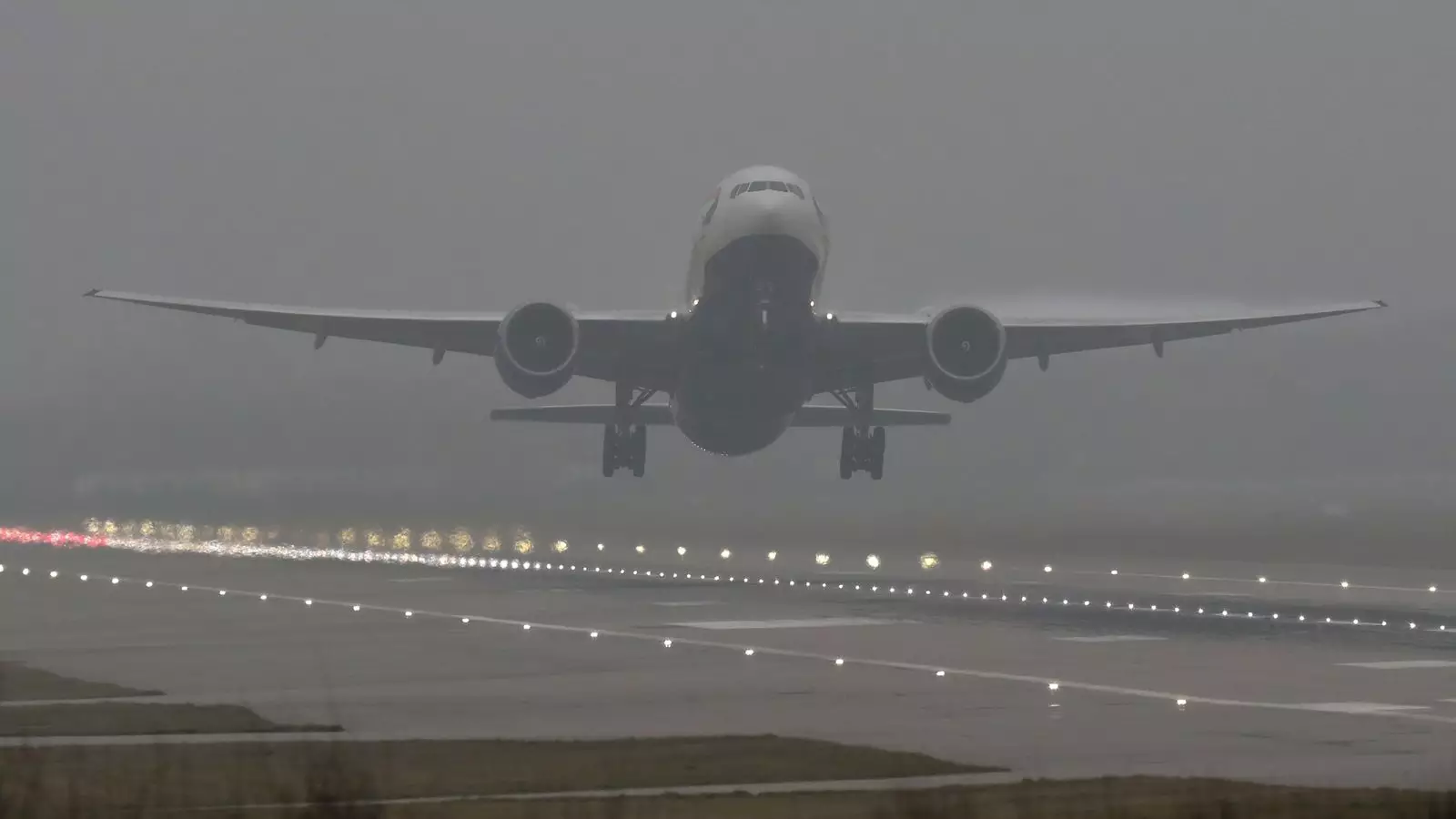The recent spell of heavy fog enveloping the UK has elicited considerable disruption across its major airports, impacting thousands of travelers and prompting critical travel advisories. Ground visibility has plunged to dangerous levels at key air hubs, leading to air traffic restrictions that the National Air Traffic Services (NATS) have deemed essential for maintaining safety standards. On a typical Friday, over 20,000 passengers were affected due to these delays and cancellations, highlighting the serious ramifications of weather-related disturbances on travel logistics.
Travel journalist Simon Calder provided insights into the situation, noting a harrowing tally of over 40 cancellations at pivotal airports including London City, Heathrow, and Gatwick. These revelations underscore the scale of the challenges being faced by airlines and airports alike during this peak travel season. While air travel disruptions are not unprecedented, the fast-approaching holiday season makes such interruptions particularly stressful for those with travel plans.
As fog blankets vast areas of England, advice has been issued to road users to exercise heightened caution. Limited visibility drastically increases the risk of accidents, compelling officials to urge drivers to maintain a greater distance between vehicles to allow for safe braking. The Met Office has alerted the public to prepare for longer journey times and to stay informed about ever-changing conditions on the roads.
The anticipated fog impacts not only the airways but extends its repercussions to land travel, creating a compound effect where both modes of transportation may leave passengers stranded. With forecasts predicting that visibility may drop to as low as 100 meters, road users across the South East and central England need to proceed with caution, as the inclement weather shows no signs of abating any time soon.
The situation at airports is evolving as both Gatwick and Heathrow report significant numbers of flight delays and cancellations. Specifically, Gatwick has seen 35 departures and 26 arrivals delayed, with additional cancellations compounding the woes of travelers. Heathrow reported a similar plight, adding to the frustrations for passengers hoping to reach their destinations without extensive holdups. Manchester airport is also in the mix, experiencing eight departures and 16 arrivals delayed as of late morning.
With the prospect of Saturday worsening, the Met Office has indicated that the fog will persist, rendering the region’s air travel system vulnerable to ongoing interruptions. Industry experts indicate that such disruptions often ripple throughout the travel ecosystem, affecting not just affected flights but also connecting journeys and passenger logistics.
Looking ahead to the weekend and beyond, more wet weather is forecasted across the UK as residents gear up for New Year’s Eve festivities. The Met Office has issued a yellow weather warning for parts of Scotland leading into Monday, suggesting that further rain may create significant disturbances during the Hogmanay celebrations in Edinburgh. Organizers have advised attendees to come prepared for unpredictable conditions, reminding them to stay updated on travel schedules as they plan to usher in the New Year.
Moreover, regions beyond Scotland could experience additional extreme weather, including wind and potentially snowfall in some areas, prompting further concerns as travelers plan their journeys during this holiday period. Experts have advised that caution is of the essence, with ongoing advisories expected to be issued as weather patterns continue to evolve.
As heavy fog continues to plague airports and roads alike, travelers across the UK face a dual threat of flight cancellations and hazardous driving conditions. The need for passengers to stay informed about real-time flight updates cannot be overstated. The current weather forecasts provide little solace, indicating a widespread trend of continued fog, rain, and wind in the days to come.
In these uncertain times, both travelers and transport authorities must adapt quickly to the changing dynamics of weather-related travel issues, placing safety above all else. As the year draws to a close, the challenge remains: managing the complexities of travel in the face of unpredictable weather. With a proactive approach and a readiness to adjust travel plans, individuals can navigate these disruptions with a degree of preparedness, hopefully minimizing the chaos that often accompanies such incidents.


Leave a Reply